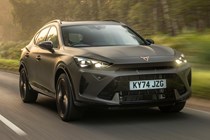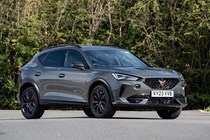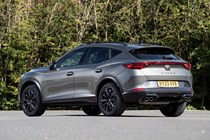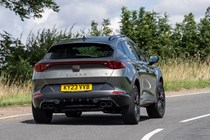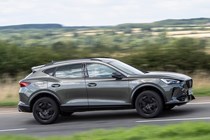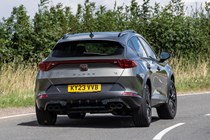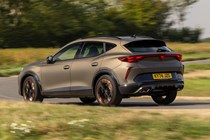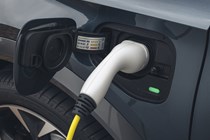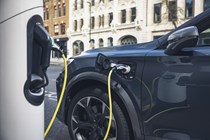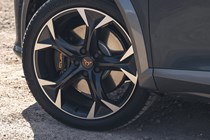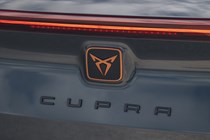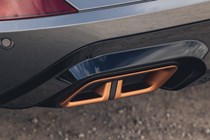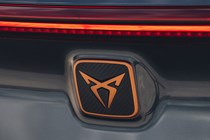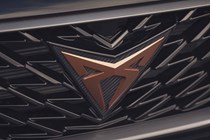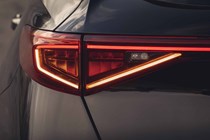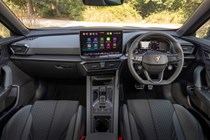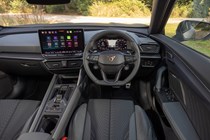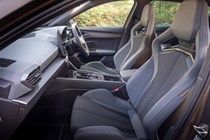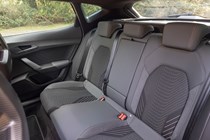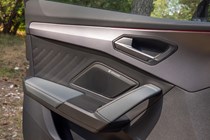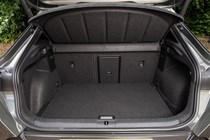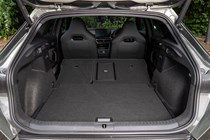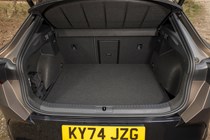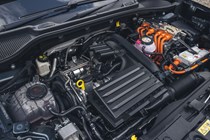
Cupra Formentor engines, drive and performance
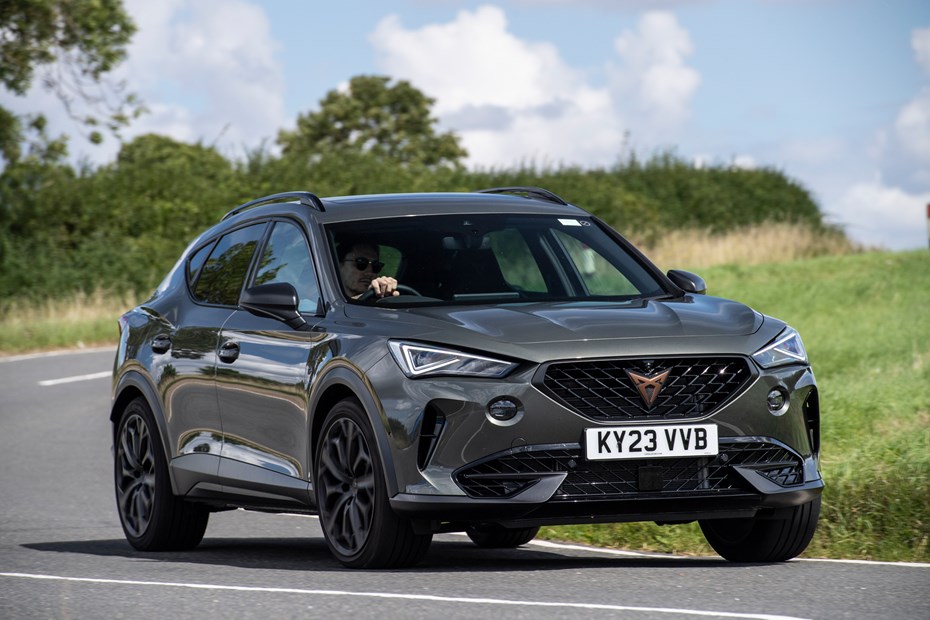
- Broad range of petrol engines
- Good performance across the line-up
- PHEV is refined and efficient
Petrol engines
The Cupra Formentor has always been offered in a good range of engine options, but they’ve been reshuffled for 2024 to include new plug-in hybrid units and one enhanced performance variant. The cheapest option is a turbocharged 1.5-litre four-cylinder unit with 150hp and 250Nm of torque – and it’s perfectly agreeable. It strikes a fine balance between performance and fuel economy. It’s also the only engine in the SUV’s line-up to be fitted with a six-speed manual gearbox as standard, although you can have it with a seven-speed automatic as an optional extra.
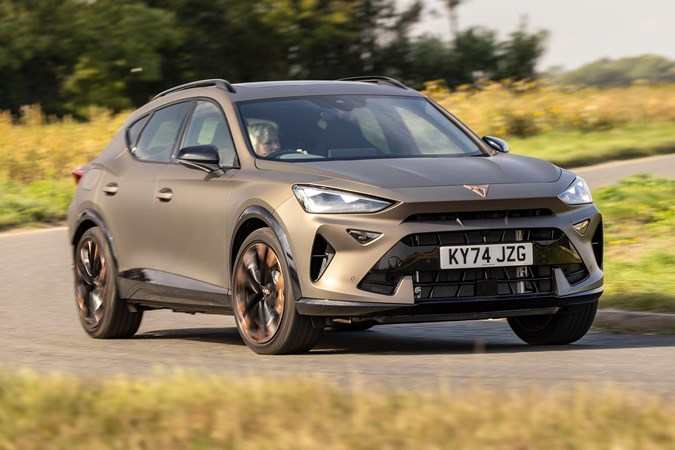
A 1.5-litre plug-in e-hybrid is also on the way for lower-spec V1, V2 and V3 cars, and it boosts power to 204hp from the same-sized engine.
The Formentor’s VZ line cars – that’s VZ1, VZ2 and VZ3 – are now available with uprated engines over the pre-facelift version. The base-spec unit is a 2.0-litre petrol that produces 265 hp (it’s on the way, we’re told) while the mid-spec plug-in hybrid option churns out 272 hp from a 1.5-litre engine and electric motor combo. At the top of the food chain, a 333hp performance engine with all-wheel drive is now offered on all the higher trim levels.
Each engine delivers a decent level pulling power, but it’s the 333hp halo option you’ll want to go for to really impress your mates. Its top speed may be limited to 155mph, but it deals with 0-62mph in 4.8 seconds. For a car of this size, that’s mightily impressive, and it feels raucously punchy in practice. Getting up to speed feels effortless, while also sounds pleasingly engaging – there’s an edge and attitude to the exhaust tune that makes for rewarding driving.
Plug-in hybrid engines
So as we’ve already mentioned, you have two options here. Both are based around the same 1.5-litre four-cylinder petrol engine, though now with a larger 19.7kWh battery pack. The cheaper model develops 204hp while the pricier option produces 275hp – the difference in performance between the two comes from a more aggressive engine tune.
Both are very smooth. You’ll hardly notice when the car shuffles between hybrid and pure-electric power, which makes it very relaxing to drive. Performance isn’t bad, either – the electric motor can shunt the car forward with as much as 330Nm of torque when you lay the pedal on the floor.
However, it isn’t thrilling in the same way as the 333hp petrol, partly because performance is blunted by the weight of the electrical gubbins, but mostly because the petrol engine sounds coarse when you wring it out which discourages you from driving hard. When you manually change gears using the steering wheel paddles, the gearbox is horrifically slow to respond, too.
What’s it like to drive?
- Very easy to drive quickly
- Direct steering – not much feedback, though
- Supple suspension deals well with B-roads
As we’ve alluded to several times during this review, the Formentor toes a delicate balance between an SUV and hatchback – and the driving experience follows the same trend. It’s sharper than traditional SUVs like the SEAT Ateca and the Skoda Karoq, but it isn’t quite as pointy as the best-driving hatchbacks, such as the Honda Civic and the Ford Focus.
The overall experience is good, though – and you can tune how the car behaves by fiddling with the drive modes. For example, in Comfort mode, the steering is light, which makes the Formentor easy to pilot around town. Body control is also slackened off a little, so you’ll notice the car leaning over more in faster corners. However, the trade-off is better ride quality. That being said, we reckon even in its most compliant mode the ride is still firm compared to some of its more sedate rivals. We’d recommend getting to know what you’re signing up for before putting pen to paper at the dealership.

The car changes character in its most aggressive Cupra mode. The throttle response is sharpened right up, the dampers get stiffer, the gearbox holds gears for longer and the steering assistance is reduced. That all makes for a more engaging experience. Sadly, despite the added weight, the steering still feels numb – but the same criticism can be levelled at almost all the Formentor’s rivals.
Our biggest piece of criticism is that the ride is slightly too harsh in Cupra mode. The dampers feel like granite and the car smashes into potholes with enough force to knock your sunglasses off. We’re sure the setting would work nicely on a well-cambered, well-maintained racetrack, but it’s just too harsh to eloquently deal with the UK’s ploughed roads. Sport mode is a better compromise.
The Formentor has always cornered well, but it’s now even more agile thanks to a torque splitter on the rear axle. It’s hand-me-down Volkswagen Group technology, having first appeared on the previous-generation Audi RS3, that sends additional power to the outside wheel during corning. It benefits the way the Formentor handles greatly, but is only available on top-spec 333hp models. Performance car fans will be disappointed to learn that the drivetrain never sends an overwhelming amount of power to the rear wheels (so you won’t be sliding through turns like Juha Kankkunen), but there’s enough there to notice it.
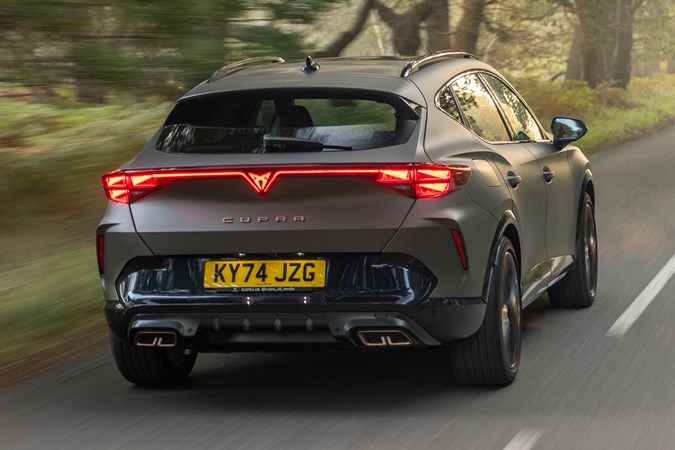
Even with the most powerful 333hp engine, the Formentor is primarily a front-wheel drive car. The drivetrain detects when there’s a loss of grip and sends just enough power to the rear axle to keep the chassis planted. It’s a convincing setup – we were impressed by how well the system glued the car down, especially in soaking conditions.
Cupra also sells a faster version of the Formentor in continental Europe. It’s called the VZ5 – and it uses the same 2.5-litre five-cylinder petrol engine found in the Audi RS3. It has 390hp and a drift mode that’ll allow it to slide around like it’s being captained by Colin McRae. Sadly, Cupra won’t bring that model to the UK.


